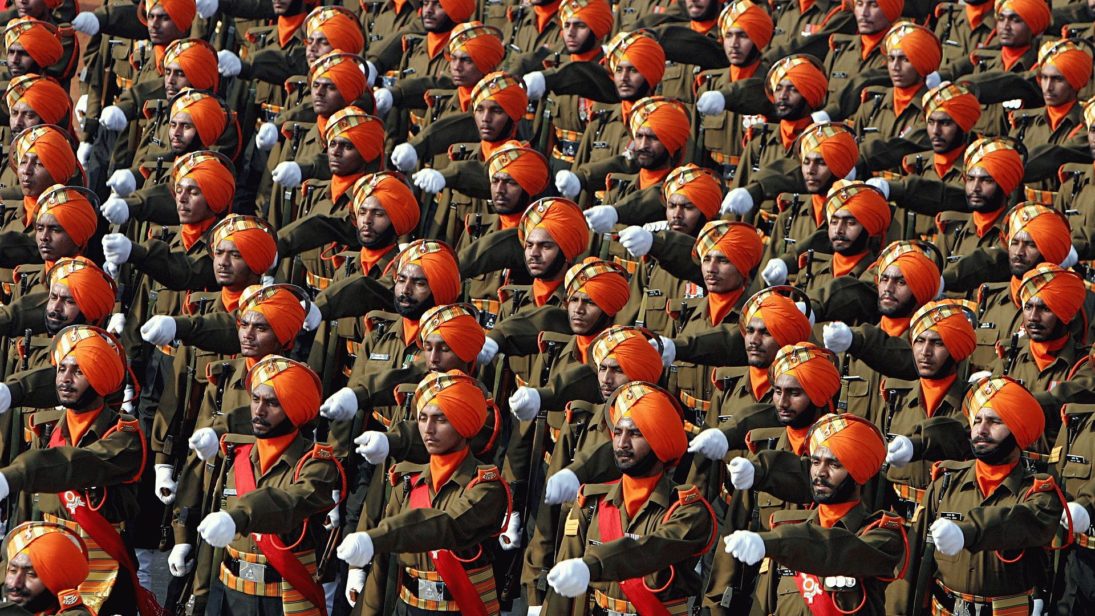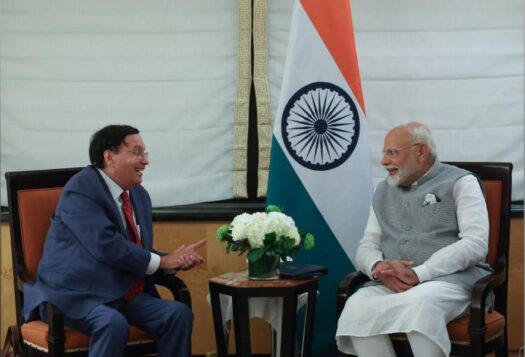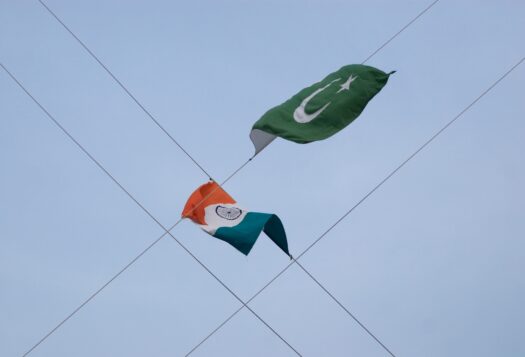
The current political environment between India and Pakistan is not a harbinger for peace. There was hope that the newly-elected Imran Khan government in Pakistan might succeed in resuming the long-stalled dialogue with India on issues of Kashmir and cross border terrorism. Initially, it seemed as though India would agree to the terms of Pakistani Prime Minister Imran Khan’s recent letter to his Indian counterpart, Narendra Modi, requesting a meeting between the foreign ministers of the two countries at the sidelines of the session of the United Nations. However, India cancelled these talks, blaming Pakistan for the killing of three policemen in Jammu and Kashmir and accusing it of “glorifying terrorism” by releasing a postage stamp featuring leader of Hizbul Mujahideen, Burhan Wani, who was killed by Indian security forces. Khan responded to India’s claims, calling them baseless and the cancellation of talks “arrogant and negative.” In addition, recent hard-hitting official statements of the foreign ministers of India and Pakistan against each other at the 73rd session of the United Nations General Assembly seem to constrict the space for dialogue between the two countries in the near future. Without ongoing dialogue, India and Pakistan remain mutually vulnerable to the possibility of war.
Risks of Non-Communication
The Indian government recently commenced a two-day mega celebration, Parakram Parv, in honor of the second anniversary of the surgical strikes India claimed to carry out (and which Pakistan denies occurred) against suspected militants in Pakistan-administered Kashmir amidst the backdrop of a terror attack against the Uri army base in India-administered Kashmir in September 2016. The festival, which was intended to “showcase India’s determination that it would not take attacks on its unarmed soldiers on its own soil lying down”, according to Defense Minister Nirmala Sitharaman, happened to coincide with comments by the Indian Army Chief General Bipin Rawat in favor of the need for another round of surgical strikes across the Line of Control (LoC).
Every Indian is proud of our armed forces and brave soldiers. Yesterday 1.25 billion Indians celebrated #ParakramParv. We remembered the 2016 surgical strike when our soldiers gave a befitting reply to those waging a proxy war in the garb of terrorism: PM @narendramodi pic.twitter.com/4VLFxT27n8
— PIB India (@PIB_India) September 30, 2018
This praise for the 2016 surgical strikes misses the fact that such strikes cannot avoid escalation to the nuclear level. It is likely that Pakistan will be prepared to meet and block Indian force at any level of violence under its policy of full-spectrum deterrence. Moreover, the two states are operating in an emotionally charged environment, hence fear of Indian conventional superiority could compel Pakistan to abandon a policy of recessed deterrence and deploy Nasr batteries in the battlefield during a crisis. Additionally, the United States’ role as a crisis manager to de-escalate a crisis and avoid war by containing the two states’ escalatory behavior has diminished. U.S. priorities have shifted away from Pakistan and it has limited leverage over India to regulate its behavior due to their shared interests in the broader Asia-pacific region. Thus, India cannot be sure that another surgical strikes scenario would not lead the region to accidental or inadvertent use of tactical nuclear weapons.
Without a comprehensive dialogue process in place—due to personalities of the Bharatiya Janata Party (BJP) government in India, who not in favor of negotiations with Pakistan due to their current priorities of preparing for upcoming elections and enhancing India’s rising power status—neither the issue of Kashmir nor the issue of crossborder terrorism is going to be resolved in the near future. Thus, the conditions on the ground could generate another Uri-like incident. Moreover, non-communication increases the chances of misperceptions between the two states, so it is probable that surgical strikes could spiral into a crisis in the absence of communication.
The dangers of non-communication apply to a range of scenarios beyond surgical strikes. There are also escalatory pressures along the Line of Control (LoC), as exhibited by a recent attack on a Pakistani civilian helicopter by Indian security forces. Raja Farooq Haider, Prime Minister of Pakistan-administered Kashmir, was reportedly travelling inside a civilian helicopter within Pakistan’s airspace near the LoC. The Indian army resorted to firing to show that there had been violation of their airspace by the Pakistanis, but Pakistan denies that it had committed any violation of airspace and that the helicopter’s white color indicated that it was a civilian chopper. Usually, border forces stationed on both sides of the LoC regularly communicate to each other about aerial movements over the LoC. Why did direct communication between border forces or Director Generals of the Military Operations (DGMOs) of the two countries not take place before this helicopter came under attack? Both the countries recently established a special hotline contact between the DGMOs in order to defuse the volatile situation along the Working Boundary and the LoC in true spirit of the ceasefire agreement of 2003. These sort of misconceptions and accidents may turn smaller accidents into real and uncontrollable crisis situations.

Moderating the Security Dilemma
The suspension of communication between India and Pakistan generates doubt and fear that, in turn, leads the rivals into negative arms competition. For example, India is accumulating power to create balance in the broader Asia-Pacific region. Pakistan perceives this in turn as the creation of a power imbalance in South Asia, heightening its own insecurity. This perception pushes Pakistan to introduce countermeasures to guarantee its own security. A lack of negotiations makes it more difficult for states to moderate the security dilemma as the likelihood and number of conflict scenarios have increased while avenues for cooperation have decreased.
History teaches us that two nuclear adversaries cannot afford such emotional and irrational political behavior and non-communication due to risks of wars. Despite arms competition and immense political differences at both the levels, the United States established a hotline with Soviet Union in 1963 after the Cuban Missile Crisis. This effectively moderated the security dilemma during the peak of Cold War competition, later leading to establishment of the Nuclear Risk Reduction Center (NRRC) and a range of arms control treaties in order to reduce the risks of war. To promote trust and diminish the risk of escalation in crisis time, existing communication channels, including the hotline between the two militaries, should remain open at all times. Additionally, others could be added. In the Stimson Center’s Off Ramps initiative, Harry I. Hannah, a senior analyst in the U.S. intelligence community, has proposed one potentially effective proposal: mimicking the NRRC structure, Hannah has advocated for “hotline-plus” communications link between the National Security Advisers and DGMOs of both countries.
A lack of negotiations makes it more difficult for states to moderate the security dilemma as the likelihood and number of conflict scenarios have increased while avenues for cooperation have decreased.
Beyond such routine communication mechanisms, it is important that dialogue be implemented to improve understanding of the other’s intentions. A comprehensive dialogue process needs to be initiated in which political leadership make efforts to discuss issues related to cross border terrorism and Kashmir, so that these issues can finally be resolved. Additionally, the emergence of new technologies and weapons systems, such as Ballistic Missile Defense (BMD) systems and Multiple Independent Re-entry Vehicles (MIRVs), sea-based systems, and short-range missiles, have made deterrence stability in South Asia increasingly fragile. One way to alleviate this tension and avoid escalation would be for India to open a dialogue process with Pakistan on which technologies are directed at Pakistan and which ones are not. This may lead to establishment of a constructive dialogue on arms control arrangements.
Optimal Way Forward
The optimal way forward for India and Pakistan is dialogue: talks between the neighboring nations would lead to a better understanding of one another’s intentions. This will lower the probability of surgical strikes and escalation in a charged political environment. Communication is key to preventing accidental war and for dealing with difficulties or crises. Both sides should immediately communicate in the wake of any incidents on the LoC where inadvertent violations of the ceasefire agreement take place to avoid misunderstandings and war.
***
Image 1: via Wikimedia Commons
Image 2: Tauseef Mustafa via Getty Images


